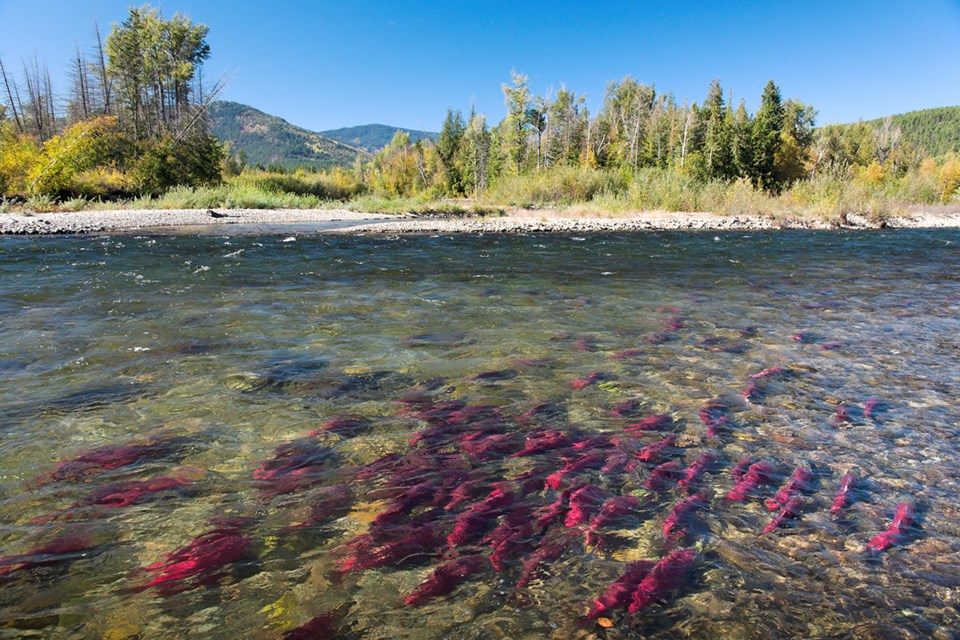Pacific salmon are struggling to survive.
From endangered Sakinaw sockeye salmon to threatened Interior Fraser coho, about half of Pacific salmon populations are in some state of decline, according to the Committee on the Status of Endangered Wildlife in Canada (COSEWIC).
On the Fraser River, sockeye returns sunk to 293,000 fish in 2020, the lowest since record-keeping began in 1893.
This year was supposed to be different. As a dominant year for the iconic salmon species, the Pacific Salmon Commission initially forecast nearly 9.8 million Fraser sockeye would return in 2022.
And while that’s since been downgraded to 6.7 million fish, the spectacle of millions of individual salmon fighting the flow of B.C.’s biggest river will go on.
Ending their life at sea, salmon use their incredible keen sense of smell to trace the chemical signature of their home stream.
As Pacific salmon return to their natal creeks, streams and rivers to spawn, some will migrate more than 3,000 kilometres upstream, often jumping up to two metres over river obstacles.
Along the way, the migrating salmon have fed humans and bears alike for millennia, their carcasses nourishing a vast ecosystem along the riverbanks, grasslands and forest floors of B.C.
Those that do complete the journey will also inevitably die, but not before they lay a clutch of eggs to spawn the next generation — their own lifeless body feeding an aquatic ecosystem with nutrients.
Where can you witness one of the most important migrations on North America’s West Coast?
This year, the Pacific Salmon Foundation (PSF) has created an interactive salmon-spotting map pinpointing public viewing access areas across Metro Vancouver, the Fraser Valley, Sea to Sky corridor, Vancouver Island, Sunshine Coast, Southern Interior and northern B.C.
In total, there are 70 family-friendly locations where marked trails will lead people to an ideal viewpoint.
As the return migration gets underway, Metro Vancouver’s North Shore is already seeing returns. Chinook, chum, pink, sockeye and coho salmon runs are expected to last from September to December.
“Seeing salmon in our own communities emboldens us to take action and do everything in our power to take care of this iconic species. We can come together as people for salmon to make a difference,” said Michael Meneer, PSF president and CEO, in a written statement.
Some important things to consider before setting out to spot salmon:
- Stay out of the stream, as stream beds may contain salmon eggs. Stomp on the eggs and you can kill the next generation of fish.
- Keep dogs on a leash and out of the water. Alternatively, leave your dog at home.
- Imagine that during the migration, the river has a "do not disturb" sign on it. As the PSF map warns: “Salmon can see you. Approach quietly and do not step into the river or throw rocks or sticks into the water.”
If the experience moves you to help, the PSF encourages people of all ages to volunteer with a local streamkeeper group.
Brought to you by Pacific Salmon Foundation





